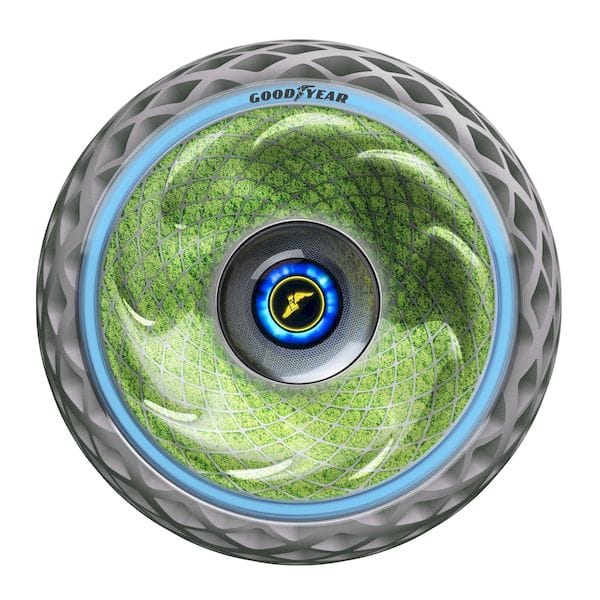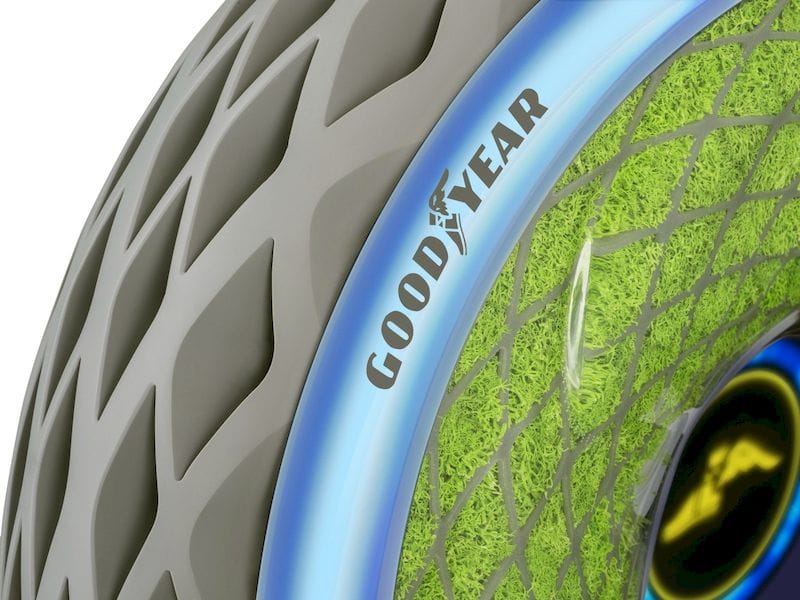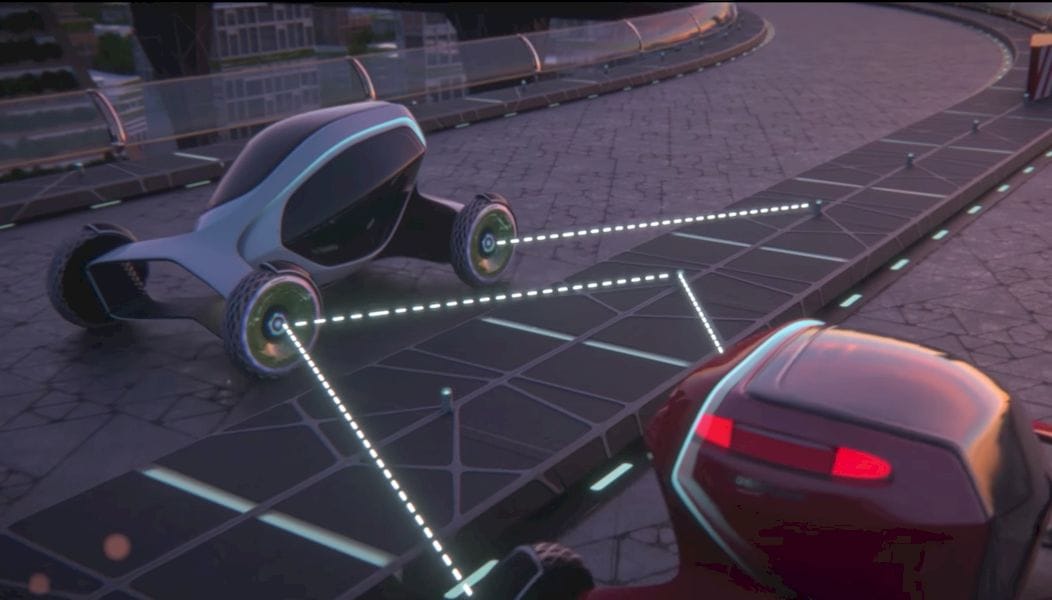
This week’s selection is the radical Oxygene EV tire design by Goodyear.
This 3D printed tire is unlike any you’ve ever used. Designed to complement eco-friendly electric vehicles, this tire is touted to clean the environment in addition to holding up your vehicle.
Oxygene features a tubeless design that is supported by strong recycled material 3D printed in a sparse pattern. This approach should make the tire last through obstacles that might cripple normal tires. It also should be quite a bit lighter.

But the really interesting feature is that the vacant space on the interior of the tire is filled with moss! This green plant lives on the inside of the tire and is fed water that’s expertly channeled from the exterior tire surface.
The moss also absorbs CO2 from the atmosphere, as all plants do, contributing to the environment.
Even more surprising is that the Oxygene design includes an intelligent AI system that monitors performance and is able to communicate with nearby objects as shown here. The method of transmission is a visible light signal using “LiFi”. I’m not clear on why you would need this feature, but it is certainly interesting.

Let’s get one thing straight however: this is not a real product. It’s only a concept from Goodyear and definitely has not been made.
Regardless of the real-life existence of the Oxygene, I do have some thoughts about it.
While kudos go to Goodyear for attempting some level of eco-friendliness on this design, I cannot say that it would substantially contribute to solving climate change. Yes, the moss will absorb some greenhouse gases, but so would a hectare of moss that you could install for a lot less money and effort.

I wonder how well moss would survive given the tremendous G-forces set upon it when the wheel is spinning at high speed. Let’s do some arithmetic: suppose your vehicle is traveling at 100km/h, and the inner radius of the Oxygene on which sits the moss is 25cm and the external radius to the wheel surface is 35cm.
The circumference of the wheel is 2 * PI * 35cm = 2.2m. To reach 100km/h, or 27.77m/s, the wheel must spin 12.6 times per second, or 757.57 RPM. At this spin rate, the 25cm radius zone on which the moss “rests”, should experience 160G’s.
I think you might end up with green mush, not free moss.
I’m also not sure that a computing system could work so well, either.
But nevertheless it’s an interesting idea that shows out-of-the-box thinking when presented with 3D printing’s ability to produce any imaginable shape.
I still have one question: how well will these tires work in snow?

